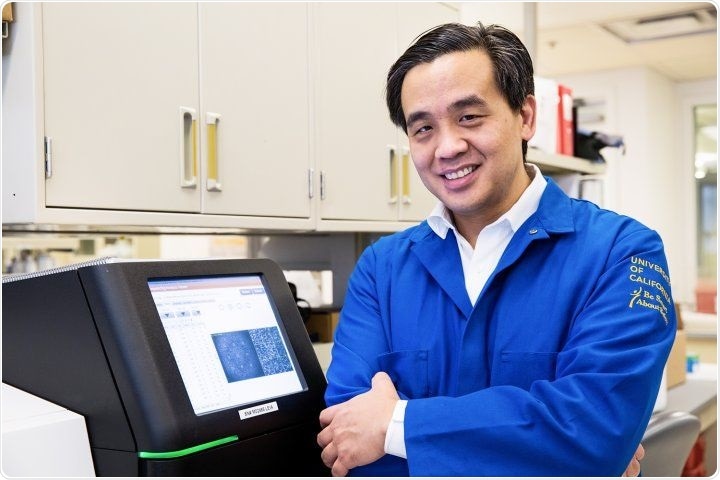Researchers from the University of California, San Francisco have designed a single clinical laboratory test that can detect the microbial miscreant affecting patients hospitalized with serious infections in just six hours. This is regardless of the type of body fluid that is sampled, the species or the type of infectious agent, or whether doctors begin with any clue as to what the miscreant may be.

A single clinical laboratory test developed by UCSF scientists will speed appropriate drug treatment for serious ill by identifying any microbial miscreant afflicting a patient in as little as six hours. Image Credit: Elisabeth Fall.
According to the study’s authors, the laboratory test will be a lifesaver, expediting relevant drug treatment for patients who are seriously ill and should change the way infectious diseases are diagnosed. The study was published in the Nature Medicine journal on November 9th, 2020.
The advance here is that we can detect any infection from any body fluid, without special handling or processing for each distinct body fluid. It’s a simple procedure.”
Charles Chiu, MD, PhD, Study Corresponding Author and Professor, Department of Laboratory Medicine, University of California, San Francisco
Chiu is also the director of the UCSF-Abbott Viral Diagnostics and Discovery Center.
Standard diagnostic tests are developed to identify only one or, at times, a small panel of viable pathogens. On the other hand, the latest protocol uses the robust “next-generation” DNA-sequencing technology so as to account for all DNA present in a sample, which may be taken from any species—human, parasitic, bacterial, fungal, or viral species. This means, clinicians no longer need to have a suspect in their minds.
To detect a match, the latest laboratory test depends on uniquely developed analytical software to match the sequences of DNA in the sample to huge genomic databases that cover all familiar pathogens.
At the UCSF Center for Next-Gen Precision Diagnostics, Chiu and collaborators initially developed this technique to detect infectious agents in spinal fluid in cases of meningitis and encephalitis. This particularly helped to save the life of a boy who has been sick for a long time and subsequently confirmed the protocol for use as a clinical test that is currently being ordered by doctors at hospitals across the country.
Besides this, Chiu and collaborators designed an analogous blood test for sepsis, which is a top killer of hospital patients, while other tests utilize respiratory fluid to diagnose the infectious causes of pneumonia,
However, all these tests have been developed to work only with certain body fluids, and not with all. Regrettably, doctors are usually unclear about the origin of the infection in a certain patient and should dispatch samples of many different body fluids at the same time for laboratory analysis.
Now in the latest study, the UCSF team, including Joe DeRisi, Ph.D., and Steve Miller, MD, Ph.D., both co-founders of the Center for Next-Gen Precision Diagnostics, compared the performance of their latest single-protocol “metagenomic” DNA test with gold-standard laboratory culture-based tests and also with the current standard PCR-based DNA tests, employing a pair of high-powered DNA sequencing technologies to diagnose a fungal or bacterial infection.
One test was a movable, pocket-sized sequencer created by Oxford Nanopore Technologies, which can finish sequencing in less than six hours and so far has been utilized almost exclusively by research laboratories.
The other test was Illumina sequencing, which can concurrently manage several samples in parallel and which is already being utilized in certain clinical laboratories (including the one at UCSF), but which needs over 24 hours to finish.
The team examined body fluids—a total of 180 samples collected from in and around the lungs, the spinal cord, the peritoneal cavity, joints, pus-filled abscesses, and other sites like tonsillar fluid as well as vitreal (eye) fluid—from 160 patients, of whom 144 were hospitalized.
When compared to PCR and gold-standard culture, the team diagnosed 91% of fungal and 79% of bacterial infections by Illumina sequencing test and diagnosed 91% of fungal and 75% of bacterial infections by nanopore sequencing test.
Chiu and collaborators used the metagenomic DNA test and effectively diagnosed infections in 7 of 12 patients whose illnesses stayed undiagnosed following PCR-based DNA testing or standard culturing.
We think this one metagenomic test can potentially replace all PCR-based DNA tests now being used to detect hundreds of organisms that can’t be adequately cultured.”
Charles Chiu, MD, PhD, Study Corresponding Author and Professor, Department of Laboratory Medicine, University of California, San Francisco
Currently, the team is moving toward FDA regulatory approval to make this test a routine part of clinical practice at both UCSF and elsewhere.
Source:
Journal reference:
Gu, W., et al. (2020) Rapid pathogen detection by metagenomic next-generation sequencing of infected body fluids. Nature Medicine. doi.org/10.1038/s41591-020-1105-z.